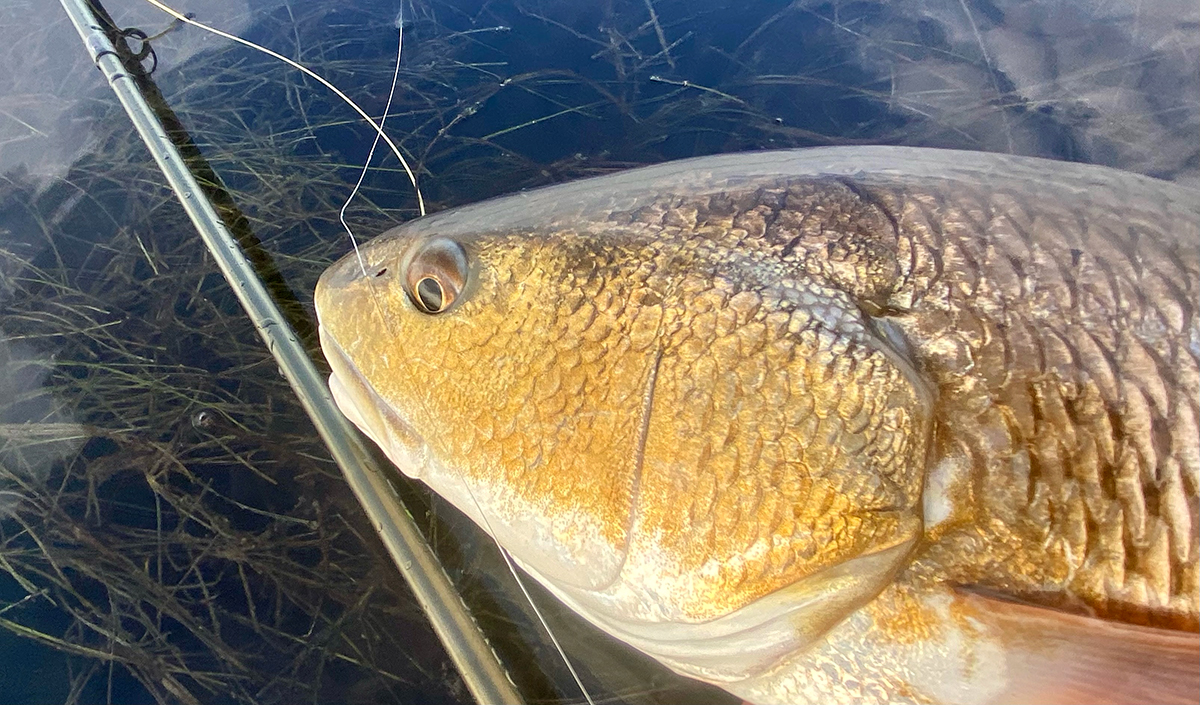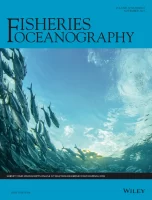
North Carolina’s state fish is the red drum, an Atlantic fish with a copper body that is a favorite of coastal anglers. But as recreational fishers might tell you, the number of red drum available to catch each year varies tremendously. Until recently, no one had formally studied what causes this variation.
A recent study out of the University of North Carolina Wilmington and published in Fisheries Oceanography examined how environmental factors impact red drum recruitment. That is, how do things like wind and water temperature affect how many juvenile red drum are present in nearshore areas every year?
Supporter Spotlight
Fisheries scientist and lead author on the study Danielle Goldberg first noticed the variation in red drum recruitment when looking at data from the North Carolina Division of Marine Fisheries. The division has been surveying the red drum juvenile population every year since 1991. At the time that Goldberg began her research, this gave her 26 solid years of data on red drum recruitment.

She decided to focus on three environmental factors: wind, water temperature and productivity. Productivity can be understood as the amount of phytoplankton in nearshore areas, which serves as an indicator of the amount of prey available to juvenile red drum. Goldberg could have focused on other environmental factors, but felt that these three were most likely to have a direct effect on red drum recruitment.
“The best way I can describe taking on this project was looking for a needle in a haystack, when we don’t really even know what the needle is,” Goldberg said.
Goldberg drew from the longstanding datasets on wind and water temperature. Productivity was measured using satellite images of chlorophyll-a. There were fewer years available for productivity analysis, which meant that it couldn’t be modeled alongside the other two factors. But wind and water temperature were modeled together using generalized additive models, or GAMs.
Generalized additive models allow you to look at all the factors at one time, Goldberg said. “So that is why we chose this type of model, just to see if there’s any interactive effects that would be shown that we either didn’t see or just would also confirm what we did see when looking at them on an individual basis.”
Supporter Spotlight

Goldberg broke the red drum juvenile abundance data into smaller segments of biweekly and monthly periods as well as the seasonal average. By dividing the season into these increments, she was able to look for more precise trends on how red drum recruitment was affected by environmental factors.
Prior research shows that recruitment will be more strongly affected by environmental factors at the bounds of the population range. North Carolina happens to be near the northern boundary of the red drum’s range.
Goldberg and her co-researchers found that when north and northeast winds occurred in August, as opposed to later, there was an increase in red drum recruitment. This indicates that wind plays an important role in transporting larval-stage red drum to nearshore areas. They also found that higher nearshore water temperatures early in the spawning season occurred during years with high recruitment.
Knowing this can help red drum fisheries managers forecast what years will facilitate high recruitment, and can help managers understand what is happening during years with low recruitment. This information also contributes to a greater understanding of the relationship between fisheries and environmental factors. Because Goldberg worked with the Division of Marine Fisheries to do this research, this information goes directly into the hands of fisheries managers.
Lee Paramore, marine biologist with the division, was a co-author of the study. He also conducted the survey data collection that Goldberg used for the research. According to Paramore, red drum is managed by the division as a bycatch fishery when it comes to commercial fishing. Recreational catch and release fishing for red drum is exceedingly popular and represents the majority of red drum that are caught. There are strict bag limits in place to reduce harvest of red drum and increase the population.
“For the last 15 or 20 years, we have been meeting our management targets for red drum,” Paramore said. “So, the stock is considered to be doing well.”
Paramore said the insight from Goldberg’s research can be used to improve red drum management in the future.
Goldberg said future research could look more closely at productivity. Since there were years missing from their data for chlorophyll-a, it was difficult to get a complete picture of how productivity affects red drum recruitment. For a future study, researchers might use a different method for measuring productivity.
Another interesting avenue for study, said Goldberg, will be how climate change affects fisheries. Since Goldberg’s paper indicates a relationship between winds and water temperature and red drum recruitment, it is reasonable to suspect that climate change will impact red drum.
“There’s a lot of variation that could happen with climate change,” Goldberg said. “I definitely think it’s going to affect red drum.”







